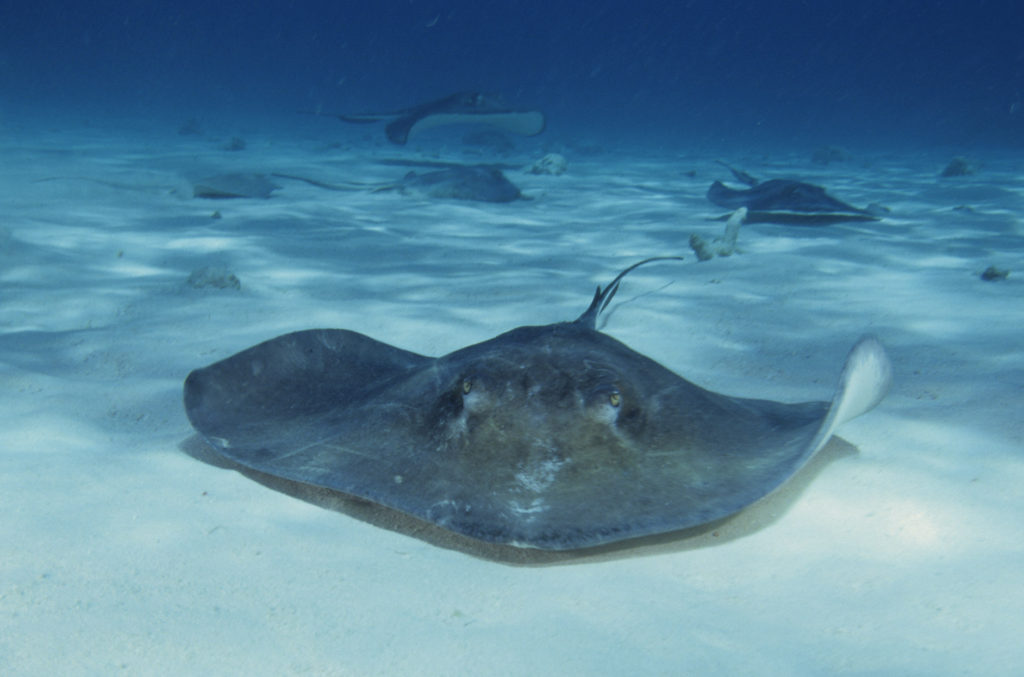 What is the best way to treat a stingray wound?
What is the best way to treat a stingray wound?
The best way to treat a stingray sting is to soak it in uncomfortably hot water, 105 to 115 degrees. You need to soak it for 30 to 60 minutes to make the pain go away. The hot water breaks down the toxin. You are either going to have a small puncture wound or laceration from the barb. You need to disinfect the wound, keep it clean, and keep an eye on it. The biggest risk from stingray stings is infection.
What is the best way to avoid being stung by a stingray?
The best way to avoid being stung by a stingray is to avoid going into its environment. If you do go into the water, try to stay off the bottom. If you are on the bottom, shuffle your feet. Instead of picking up your feet, kind of drag your feet and that may scare them away. You can also wear good swim fins like Duck Feet or Vipers that cannot be penetrated by the barb.
What kinds of warnings do you post?
When we begin to see a lot of people being stung by stingrays, we will fly a purple flag. The purple flag means marine pests. That could be jellyfish, stingrays, or sharks. But normally if you see a purple flag, it means stingrays, so use more caution. You can always check with a lifeguard or our conditions board located on all of our life guard towers. We will also make announcements if a lot of people are getting stung.
Is there a season or time when more stings occur on our beaches?
More people are stung by stingrays in the spring and summer. I have noticed there are more stings when the water is warm and when the surf is small. If the surf is big and crashing, we don’t see a lot of people getting stung. It seems stingrays prefer calmer water. During low tide, more people tend to be stung. I don’t know if it is the same for other beaches.





